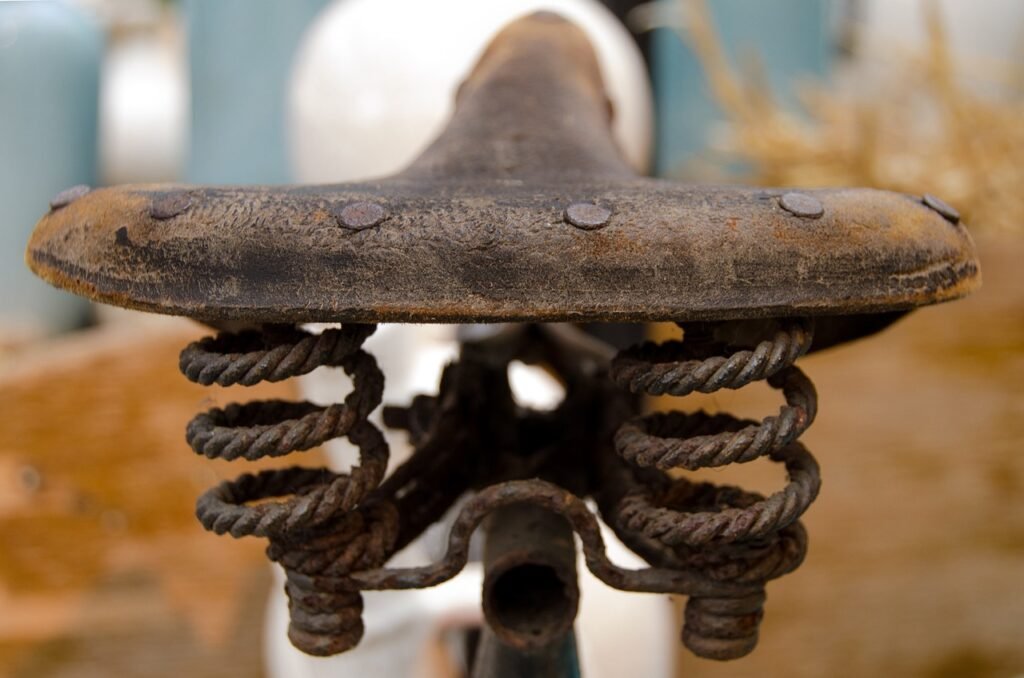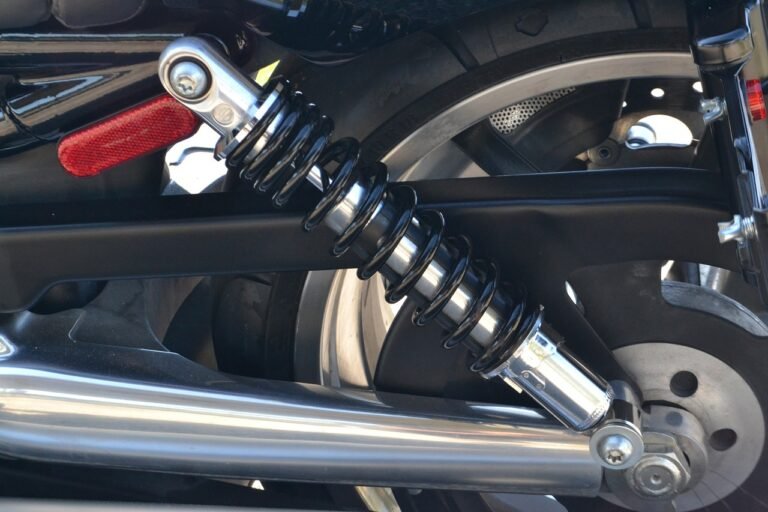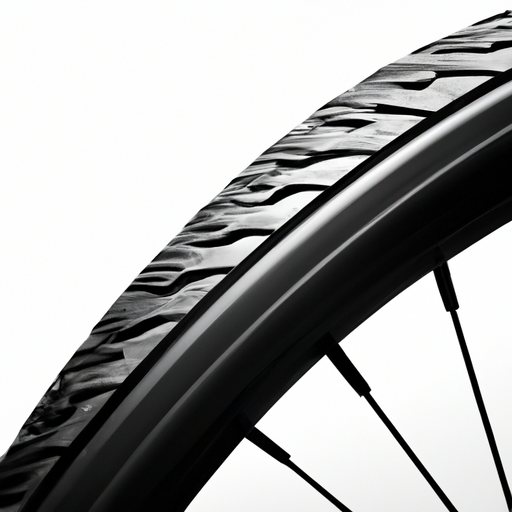What’s The Difference Between Clipless And Flat Pedals?
In the world of cycling, the choice between clipless and flat pedals can make a significant difference in your riding experience. Clipless pedals, despite the misleading name, actually involve clipping your cycling shoes into the pedal for a secure connection. On the other hand, flat pedals provide a sturdy platform for your feet without any attachment. While both options have their advantages and disadvantages, understanding the distinction between the two can help you choose the pedal type that suits your cycling style and preferences.

Clipless Pedals
Definition
Clipless pedals are a type of bicycle pedal system that allows you to securely attach your cycling shoes to the pedals. Contrary to the name, clipless pedals actually involve a mechanism that connects your shoes to the pedals, providing a secure and efficient way to transfer power from your legs to the bike. The term “clipless” refers to the fact that these pedals do not use the traditional toe clips or straps that were commonly used in the past.
How They Work
Clipless pedals work by using a cleat system that is attached to the bottom of your cycling shoes. The cleats have a specific design that matches the pedal mechanism. When you step onto the pedal, the cleats lock into place, creating a secure connection between your shoe and the pedal. To release your foot from the pedal, you simply twist your heel outward, disengaging the cleat and allowing you to remove your foot.
Advantages
One of the major advantages of clipless pedals is the increased efficiency and power transfer they provide. With your feet securely attached to the pedals, you are able to pedal more fluidly and effectively, maximizing your energy output. This improved efficiency can lead to faster speeds and less fatigue, especially during longer rides.
Clipless pedals also offer better foot stability and control. The connection between your shoe and the pedal prevents any unwanted movement or slipping, allowing you to maintain a stable foot position throughout your pedal stroke. This can be particularly beneficial when navigating rough terrain or performing technical maneuvers on the bike.
Disadvantages
One of the main disadvantages of clipless pedals is the learning curve associated with using them. It can take some time and practice to become accustomed to engaging and disengaging the cleats smoothly and quickly. This learning process may result in a few awkward and potentially embarrassing falls when first starting out. However, with practice and patience, most riders quickly adapt to the clipless pedal system.
Another disadvantage of clipless pedals is that they require special cycling shoes with compatible cleats. This additional investment can increase the overall cost of cycling equipment. Additionally, the requirement of wearing specific shoes limits the versatility of clipless pedals, as you may need to carry an extra pair of shoes or change into them before and after riding.
Flat Pedals
Definition
Flat pedals, also known as platform pedals, are the traditional type of pedals that most people are familiar with. These pedals have a simple, flat surface that allows you to place your foot on them without any additional attachments or connections. Unlike clipless pedals, flat pedals do not require specialized cycling shoes with cleats.
Types
Flat pedals come in a variety of designs, materials, and sizes to suit different riding styles and preferences. Some flat pedals have additional features like pins or concave surfaces to provide extra grip and prevent your feet from sliding off the pedals. Other pedals may be made from materials such as aluminum or composite to enhance durability and reduce weight.
Advantages
One of the main advantages of flat pedals is their simplicity and ease of use. You can wear any type of footwear with flat pedals, whether it’s sneakers, sandals, or even boots. This makes them a convenient choice for casual riding or commuting, as you don’t need to change into specific cycling shoes before getting on your bike.
Flat pedals also provide more freedom of movement for your feet. Without being attached to the pedals, your feet can easily adjust their position and angle during the ride. This flexibility can be particularly beneficial when riding in challenging terrain or when performing tricks and jumps on a mountain bike.
Disadvantages
Due to the lack of a secure connection between your shoe and the pedal, flat pedals can result in less efficient power transfer compared to clipless pedals. When pedaling, some energy is lost as your shoes may momentarily slip or bounce off the pedals. This can make flat pedals less suitable for longer rides or situations where maximizing power output is crucial.
Another disadvantage of flat pedals is the reduced foot stability and control they provide. Without being attached to the pedals, your feet are more prone to slipping or shifting position, especially when riding on rough or bumpy terrain. This lack of stability can impact your ability to maintain a consistent and powerful pedal stroke.
Key Differences
Connection to the Bike
The main difference between clipless and flat pedals lies in how your feet connect to the bike. Clipless pedals utilize a cleat system that securely attaches your cycling shoes to the pedals, creating a direct and efficient power transfer. On the other hand, flat pedals provide a free platform for your feet to rest on, without any attachments or connections.
Foot Placement
With clipless pedals, your cycling shoes are held in a fixed position by the cleats. This means your foot is always in the same position relative to the pedal, allowing for consistent and precise pedal strokes. Flat pedals, on the other hand, allow your feet to move more freely and adjust their position as needed, providing a greater range of foot placement options.
Efficiency
Clipless pedals offer a higher level of efficiency and power transfer compared to flat pedals. The secure connection between your shoe and the pedal ensures that all the power generated by your legs is directly transmitted to the bike. This increased efficiency can result in faster speeds and reduced fatigue over longer distances. Flat pedals, while less efficient, still provide a satisfactory level of power transfer for most casual riders.
Ease of Use
Flat pedals are generally more user-friendly and easier to use, especially for beginners or riders who prefer a more relaxed riding style. There is no learning curve or special technique required for engaging or disengaging from the pedals, making them a convenient choice for riders who value simplicity and convenience. Clipless pedals, on the other hand, require some practice and skill to master the quick and smooth engagement and disengagement of the cleats.
Safety
Both clipless and flat pedals have their own safety considerations. Clipless pedals offer the advantage of a secure connection, reducing the risk of your feet slipping off the pedals during fast or aggressive riding. However, they also come with the potential danger of being unable to quickly release your feet in emergency situations, such as when falling or crashing. Flat pedals, while providing less security, allow for an easier and more immediate separation of your feet from the bike, minimizing the risk of being trapped during accidents.
Choosing Between Clipless and Flat Pedals
Cycling Discipline
The type of cycling discipline you are primarily engaged in plays a significant role in determining whether clipless or flat pedals are more suitable for you. If you are a road cyclist or a competitive mountain biker who focuses on speed and efficiency, clipless pedals are generally the preferred choice. On the other hand, if you mainly ride for recreational purposes, commute, or engage in downhill mountain biking, flat pedals may be a more suitable option.
Skill Level
Your skill level as a cyclist is another important factor to consider when choosing between clipless and flat pedals. Clipless pedals require a certain level of proficiency and confidence in order to effectively engage and disengage the cleats, especially in demanding riding conditions. If you are a beginner or still developing your cycling skills, flat pedals may provide a more forgiving and comfortable riding experience.
Personal Preference
Ultimately, your personal preference and comfort should play a significant role in your decision-making process. Some riders simply prefer the freedom and flexibility offered by flat pedals, while others enjoy the efficiency and connection provided by clipless pedals. Trying out both types of pedals and assessing how they feel during rides can help you determine which option aligns better with your personal preferences and riding style.
Considerations
When making a decision between clipless and flat pedals, it is important to consider additional factors such as cost, maintenance, and versatility. Clipless pedals generally require an investment in specialized cycling shoes and cleats, which can increase the overall cost. They also require regular maintenance, such as cleaning and lubrication, to ensure optimal performance. Flat pedals, on the other hand, are generally more affordable and require minimal maintenance. Additionally, if you frequently switch between different types of cycling activities, having both clipless and flat pedal setups may offer the versatility you desire.

Transitioning from Flat to Clipless Pedals
Reasons for Transition
There are several reasons why you might consider transitioning from flat to clipless pedals. One of the main reasons is the desire for increased efficiency and power transfer. As you become more serious about cycling or start participating in competitive events, clipless pedals can help you maximize your performance and improve your overall riding experience.
Transitioning to clipless pedals can also provide a more secure and stable foot connection to the bike. This is particularly important when riding technical terrain or during fast-paced riding where every pedal stroke counts. The enhanced control and stability offered by clipless pedals can boost your confidence and allow you to push your limits on the bike.
Getting Used to Clipless Pedals
When transitioning to clipless pedals, it is important to be patient and allow yourself time to adapt to the new system. Start by practicing the engagement and disengagement of the cleats in a controlled environment. Find a quiet area or an indoor training space where you can practice clipping and unclipping your shoes from the pedals without the pressure of traffic or obstacles.
During these practice sessions, focus on developing a smooth and natural motion when engaging and disengaging the cleats. Gradually increase the difficulty by practicing in different riding conditions, such as hill climbs and descents. This will help you build confidence and improve your skills with clipless pedals.
Tips for a Smooth Transition
Here are a few tips to ensure a smooth transition from flat to clipless pedals:
-
Start with a beginner-friendly clipless pedal system that offers easy engagement and disengagement.
-
Adjust the tension of the pedal mechanism according to your comfort level. Lower tension settings make it easier to release your shoes from the pedals.
-
Practice clipping and unclipping your shoes in a stationary position before attempting to do it while riding.
-
Gradually increase the difficulty of your rides as you become more comfortable with the new pedal system.
-
Ride with a more experienced cyclist who uses clipless pedals to learn from their techniques and gain confidence.
-
Be mentally prepared for a few falls or wobbly moments when first starting out. It is a normal part of the learning process, and with practice, you will become more proficient and confident with clipless pedals.
Conclusion
The choice between clipless and flat pedals ultimately depends on your cycling discipline, skill level, and personal preference. Clipless pedals offer increased efficiency, stability, and power transfer, making them a popular choice for road cyclists and competitive mountain bikers. Flat pedals, on the other hand, provide flexibility, ease of use, and a more relaxed riding experience, making them suitable for recreational riders and those new to cycling.
When transitioning from flat to clipless pedals, it is important to be patient and allow yourself time to adapt. With practice and persistence, you will soon experience the benefits and enjoyment that clipless pedals can bring to your cycling journey. Remember to prioritize safety and choose the pedal system that aligns best with your riding style and goals.






